Since its hard-to-miss backdrop Table Mountain was named one of the New Seven Wonders of Nature back in 2007, Cape Town, South Africa, has become one of the world’s buzziest cities. (In 2014, both The New York Times and The Daily Telegraph called it the best place in the world to visit.)
Today, an exciting group of cocktail bars has cropped up, tempting residents and visitors alike with local gin, brandy, wine and infusions made with indigenous ingredients.
Here are three of the top places to explore the city’s exotic elixirs.
The first thing you notice when you walk into this bar is the huge selection of Cape Brandy displayed on shelves, a nod to the country’s rich history with producing some of the world’s best expressions of the grape-based spirit. But bar manager Justin Awehwolf Shaw is trying to get guests to view it as more than something to mix with cola.
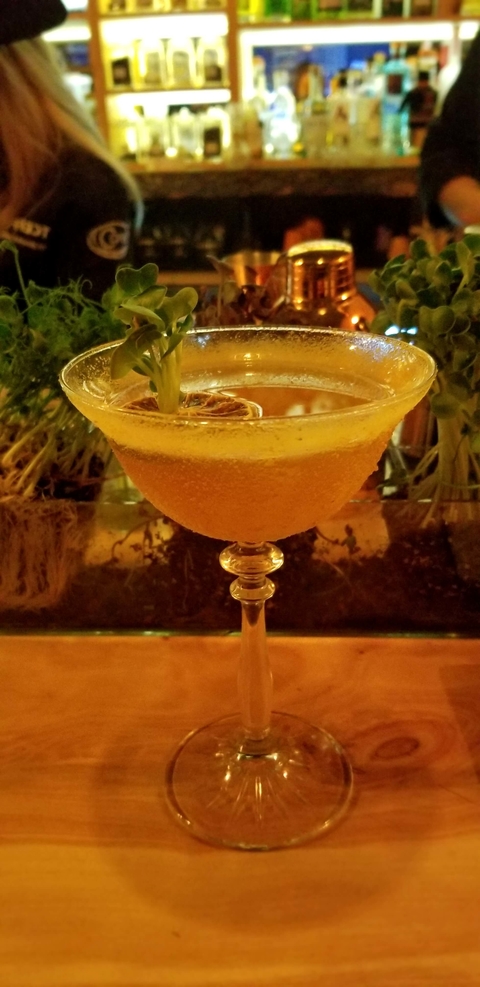
“Some have been misintroduced to the spirit and have misgivings about how wonderful that is,” he says. “We have to change that perception and make brandy reliant and sexy.” To that end he often subs it into classic cocktails including the Old Fashioned and the Sazerac. Cause Effect’s Sidecar mixes house-blended brandy (the components are a closely guarded secret) with Van Der Hum Naartjie Liqueur and citrus juice topped with fennel spray and a dehydrated citrus wheel; and the Julep mingles LadiSmith 8 Year Old Cape Brandy with date-infused sherry, maple syrup and mint, spritzed with sake. Guests can also create their own flights with pot still brandies, which are decidedly more complex than their ubiquitous blended counterparts.
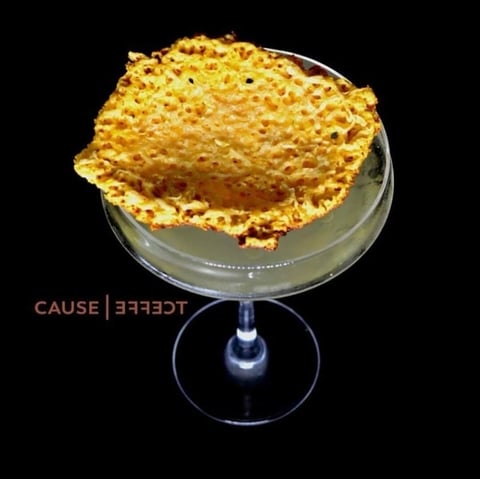
The 72-seat bar, which opened in December 2017, is inspired by Cape Town’s oceans, mountains, vineyards and fynbos; the latter is an Afrikaans word that translates to “fine bush,” the natural small-leaf vegetation that grows around the Cape Peninsula. Cocktails (brandy and otherwise) often include indigenous ingredients as well as experiential and molecular techniques.
The Cape Sugar Bird shakes OUDE Molen XO Brandy with oaked witblits (South Africa’s version of moonshine), absinthe, peach puree, fynbos honey and a tincture made with artemisia, a plant related to the daisy; and for The Willow, Shaw infuses peach brandy with smoke, then mixes it with Sauvignon Blanc, Port, pineapple, witblits and bitters crafted from wild dagga, a mint-like plant also called lion’s ear.
Read this: 3 Global Bar Pros Predict 2019 Trends
Shaw says there is an increased focus in South African bars towards sustainability, low-ABV drinks, and locally foraged unusual ingredients that have cultural heritage. “The industry is in the midst of forging its own identity,” he points out. “No longer content to follow those set by our American, Asian or European counterparts, South Africa is creating its own niche.”
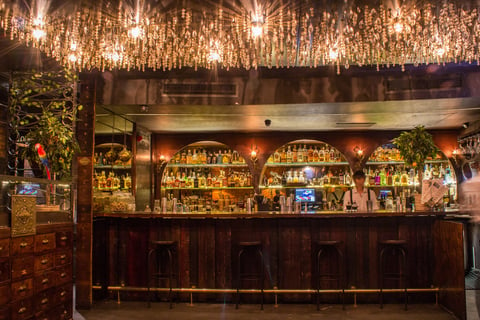
The Orphanage Cocktail Emporium
The whimsical vibe of this popular bar inspired by Prohibition-era speakeasies belies its depressing origins. As the story goes, after an influenza outbreak in the Western Cape in the 1920s, a large number of orphaned children would congregate at St. Paul’s Church on Bree Street to receive handouts of food from the priest. The thoroughfare—on which the bar is located—eventually became known as Orphan Street. Cheeky references to its past exist on the menu with cocktails named Crematorium and Child Catcher.
Read this: How to Be Seasonal When Your Seasons Don't Change
The 70-seat lounge opened in March of 2012, a spot owner Raymond Endean deems “a place for lost souls to enjoy marvelous mixture, music and company.” Since that time, he’s seen an increased focus in the city on stirred cocktails, sustainability, quality ice and carefully selected glassware. “It’s taken about seven years but we feel we are definitely at the point where we can compete with the big countries.”
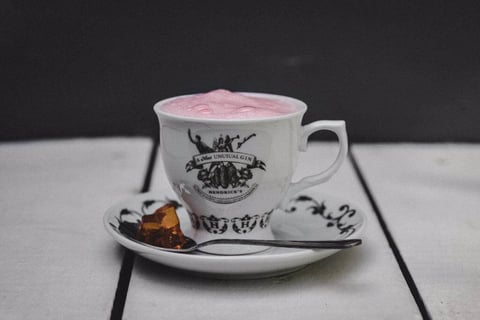
From the beginning, staff has used local ingredients, like rooibos. Technically not a tea but rather an infusion of the leaves of a shrub of the tea family, it adds a woody, nutty, subtly floral flavor to cocktails. You can find it in drinks like More Tea Vicar? with Hendricks Gin, cranberry juice, lemon and a vanilla rooibos syrup, and in its zero-proof counterpart Less “T” Vicar”. Both are served in a teacup with a block of rooibos lemon jelly on a teaspoon on the side. Other cocktails have used the flowering plant buchu and the Cape sour fig.
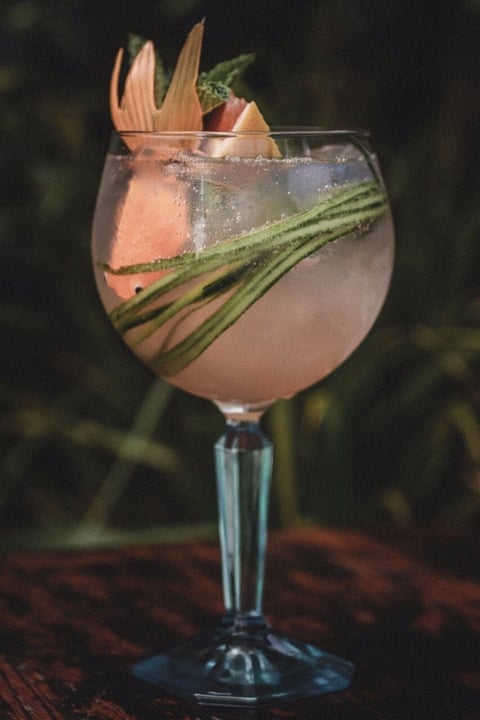
The most striking (and IG-ready) sip on the menu might just be the Swim and Tonic, a G&T riff that uses Bombay Sapphire Gin infused with chamomile tea and grapefruit peel. It’s delivered to the table in an oversized wine goblet garnished with cucumber ribbons, a ruby red grapefruit wheel and a plastic goldfish. And while local gin culture is huge in Cape Town and beyond, Endean believes it’s getting a little out of hand. “Every week there seems to be a new gin coming out,” he bemoans. “I would like to see more locally aged spirits come to the forefront, rum being one.”
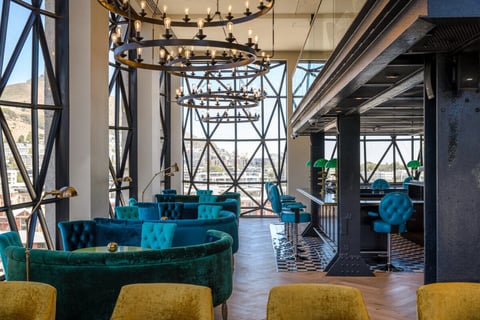
The Willaston Bar at The Silo Hotel
Overlooking the harbor on the hotel’s sixth floor, the tony cocktail bar at the boutique hotel built on the former site of a grain complex is named after the first ship that transported grain back in 1924. Beverage manager and sommelier Juliet Urquhart oversees the wine and cocktails programs, including quite a vast selection of local gins and tonics.
“A large portion of our craft gins are made using a broad spectrum of fynbos,” she says. “Distillers are creating innovative new taste profiles by distilling the alcohol together with the different plant materials.” On the back bar are intriguing local expressions like Six Dogs Blue Gin (made with pelargonium and blue pea flowers), both an Atlantic and Indian Ocean gin from Amari (Cape Town straddles both bodies of water) and Musgrave Pink Gin, infused with rose water.
Read this: World Class Cocktail Trends for 2019
The latter goes into the Rose Ginvino, the bar’s signature best-selling cocktail, along with Marras Chenin Blanc, lime and grapefruit juices, egg white and rose syrup. The drink is topped with Morena Rosé Méthode Cap Classique (South Africa traditional method sparkling wine) and garnished with a rose petal. The Kalahari Safari is what Urquhart calls a “new age Gin and Tonic” that’s a nod to how producers are boosting tonic waters with flavors that will enhance certain gins. For it, Cruxland Kalahari Gin, which is infused with Kalahari truffles and several species of fynbos, is mixed with rooibos syrup and Wilderer Bitters, topped with Fitch & Leedes Tonic and garnished with orange peel.
“I think cocktails are trending towards more spirit-forward, less fruit-forward alternatives, focusing more on the nuances of the spirit itself and less on sweet fruit bombs,” she believes. She is also making use of the region’s abundant plant kingdom with drinks that use herbs including wild sage and rosemary. Brandy is slower to take hold, so staff is trying to increase awareness by moving it beyond the after-dinner digestif and as twists on classic cocktails. Still, the philosophy is locally minded, “to focus on the great produce and products that South Africa has to offer instead of going international.”
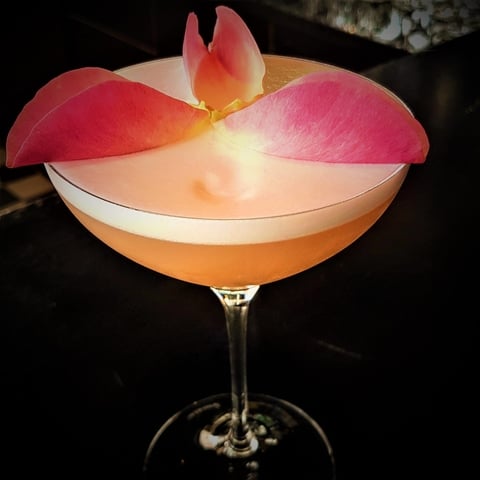
Rose Ginvino
Recipe courtesy of Juliet Urquhart, Beverage Manager and Sommelier, The Silo Hotel; Image: The Willaston Bar
The Silo Hotel’s signature and best-selling cocktail is delicate and aromatic and uses several locally produced, ingredients including gin, Chenin Blanc and sparkling wine.
- 1 ¾ oz. Musgrave Pink Gin
- ¾ oz. South African Chenin Blanc (she uses Marras)
- ¾ oz. Lime juice
- ¾ oz. Grapefruit juice
- ⅔ oz. Rose syrup (Monin or similar)
- ½ oz. Egg white
- Chilled Morena Rosé Méthode Cap Classique, to top
- Rose petal, for garnish
Add the first 6 ingredients to a cocktail shake and dry shake without ice. Add ice and shake again until well chilled. Strain into a coupe, top with the sparkling wine, and garnish with the rose petal.
Kalahari Safari
Recipe courtesy of Juliet Urquhart, Beverage Manager and Sommelier, The Silo Hotel
This “new age Gin and Tonic” uses gin infused with Kalahari truffles and several species of fynbos, which are small-leafed bush plants.
- 1 ¾ oz. Cruxland Kalahari Truffle-Infused Gin
- ⅔ oz. Rooibos syrup (see note)
- 6-7 oz. Fitch & Leedes Tonic
- Dash Wilderer Bitters
- Orange peel, for garnish
Build the drink in a large glass or goblet over ice, and garnish with the orange peel.
For the rooibos syrup:
Combine 1 cup sugar and 1 cup water in a small saucepan, bring to a boil and simmer until sugar is dissolved. Remove it from the heat, add 2 rooibos tea bags and steep for 5-7 minutes or until desired flavor is achieved. Remove tea bags and store the syrup in the refrigerator for up to a week.
Kelly Magyarics is a freelance wine, spirits, cocktail, food and travel writer in the Washington, D.C. area. She can be reached through her website, www.kellymagyarics.com, or on Twitter and Instagram @kmagyarics.
